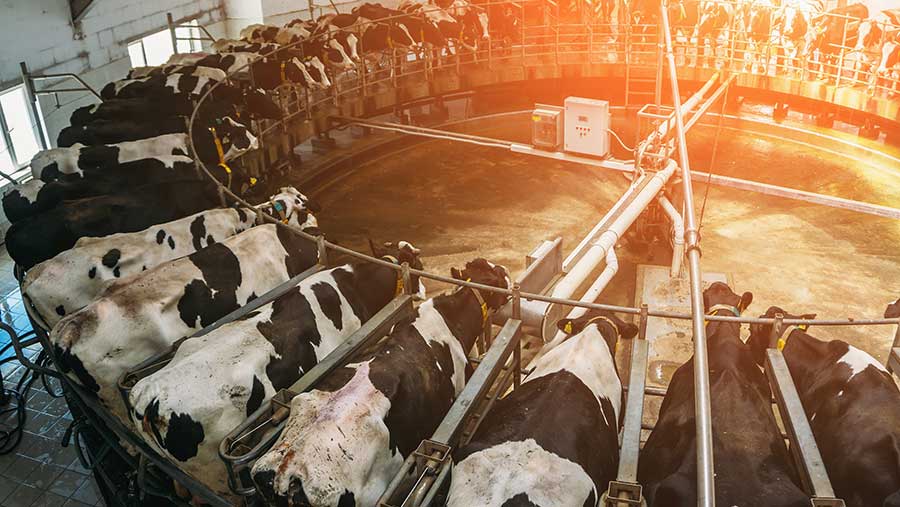Milk quality lifts as yields fall 145kg, says NMR
 © DedMitYay/Adobe Stock
© DedMitYay/Adobe Stock Challenging cost increases resulted in the first drop in average cow output in Britain for five years, according to the largest milk recorder’s latest figures.
National Milk Recording’s annual report for September 2021 to 2022 showed a drop of 145kg from Holsteins, to 9,327kg, and a drop of 104kg across all breeds.
However, farmers achieved a host of milk quality improvements while struggling with a 30% rise in feed prices.
Average parlour cake costs lifted 30% through this period, starting in September 2021 at about £270/t and hitting £350 12 months later, according to AHDB data.
See also: Farmgate milk prices expected to fall further during spring
Improvements
- Calving interval: First time below 400 days, at 399 days in Holsteins, which make up 68.2% of the herds.
- Somatic cell count: Down 7,000 cells/ml to 164,000 cells/ml in Holsteins.
- Constituents: Butterfat lifted 0.02% to 4.08% and protein rose 0.01% to 3.27% in Holsteins.
- Top Holstein herd: JH Shropshire, Shropshire, producing 1,013kg combined fat and protein and an average yield of 14,219kg a cow, milked through robots.
- Top Jersey: Cally Mains Farming, Castle Douglas, with 68 cows on three-times-a day milking, at 739kg of fat and 7,106kg of milk.
- Top Shorthorn: IL & E Harris, Carmarthenshire, with 28 cows producing 692kg of fat and 8,667kg of milk.
- Top Ayrshire: D & C Sanderson, Carmarthenshire, got 618kg of fat and protein and 7,793kg of milk from 171 cows.
- Top Friesian: Nerewater Farm, Cumbria, with 53 cows giving 692kg of fat and protein and 8,649kg of milk.
- Genetic merit: Easom & Sons, Derbyshire, topped NMR’s genetic merit table with a profitable lifetime index of £341. The herd was giving 10,105kg of milk at 4.56% fat and 3.46% protein on twice-a-day milking.
Where have milk yields been since?
Market fluctuations
Against a backdrop of falling milk prices, Patty Clayton, AHDB’s lead dairy analyst, said Britain’s supply started to recover later in 2022. This was driven by strong milk prices and a good autumn, but 2022 production remained 0.5% down overall.
“Following the forced reduction in milk production in spring 2020, sustained, steady increases in feed prices through 2020/21 kept milk production down on a year-by-year basis,” said Mrs Clayton.
“In the 2021 season, GB deliveries were down by almost 1% year on year. Further margin pressure came from the energy crisis, impacting fertiliser and fuel prices, and ultimately feed costs, through 2021/22.
“While milk prices eventually increased in response to the lower production (and higher input costs), it wasn’t until late spring/early summer that they were at a level that encouraged higher yields.”
